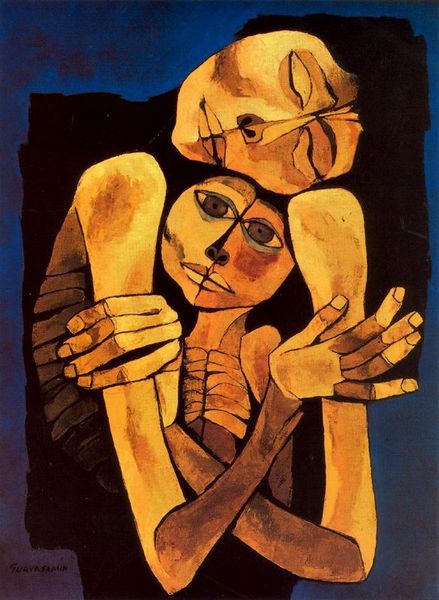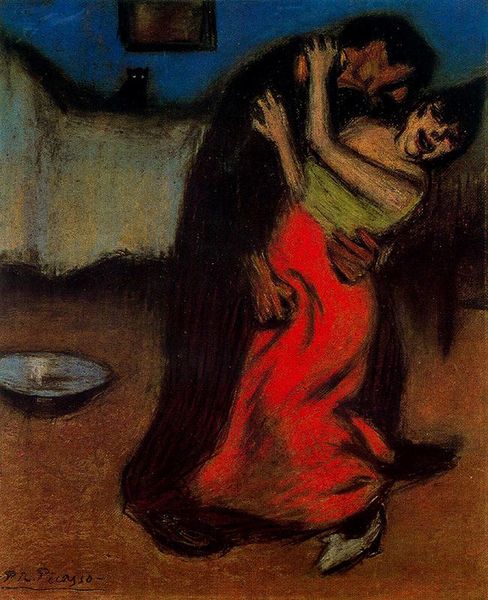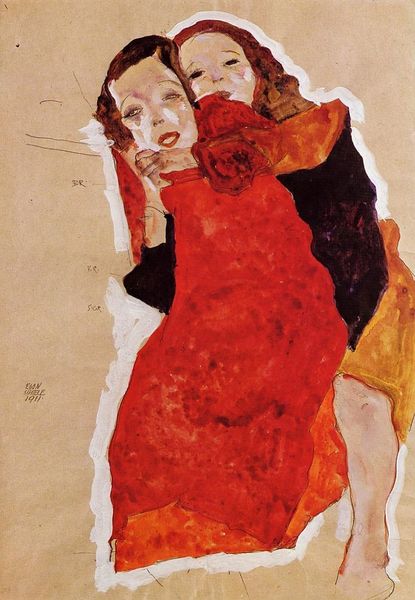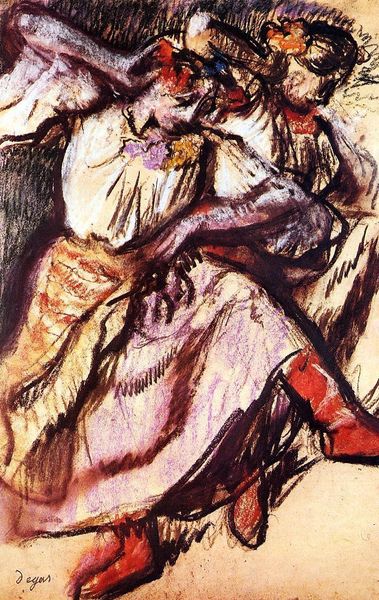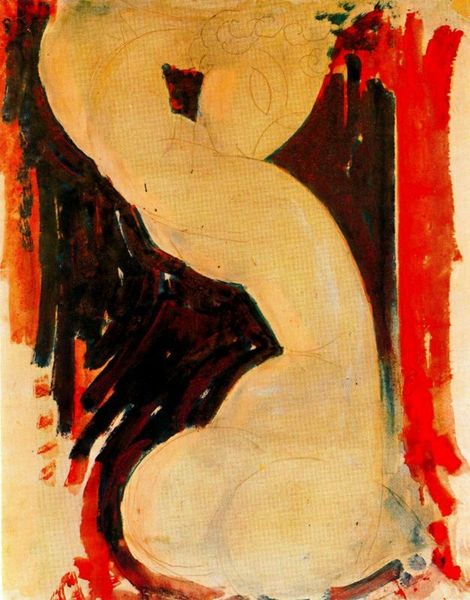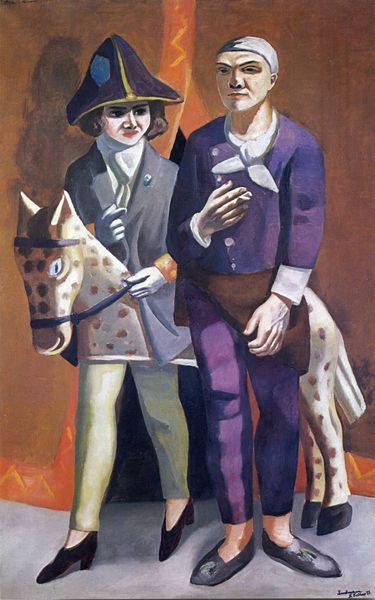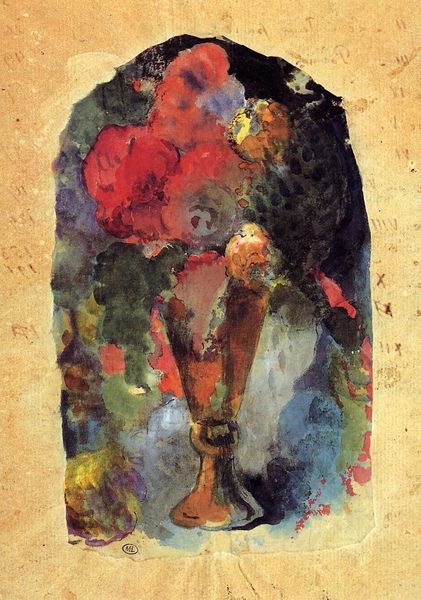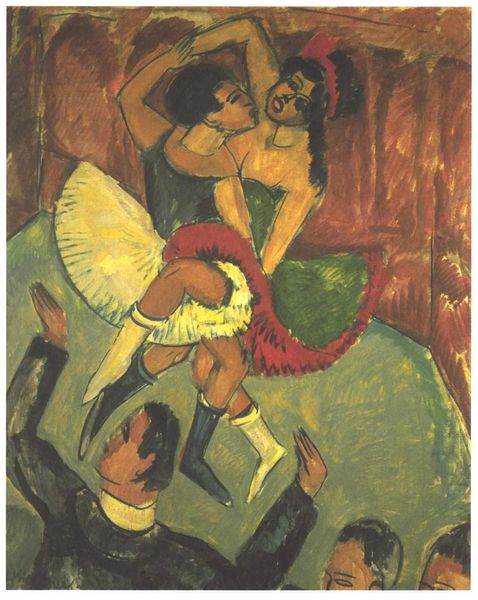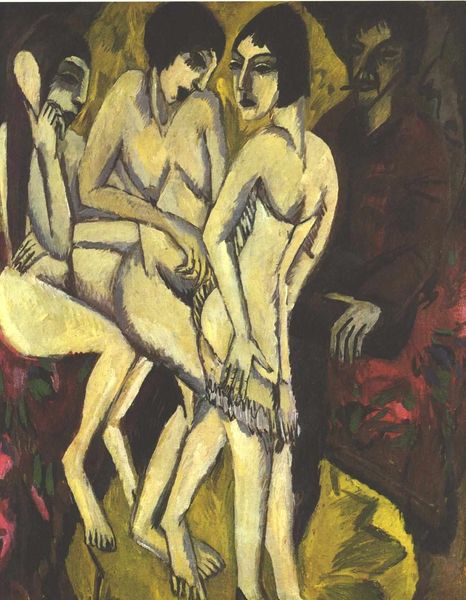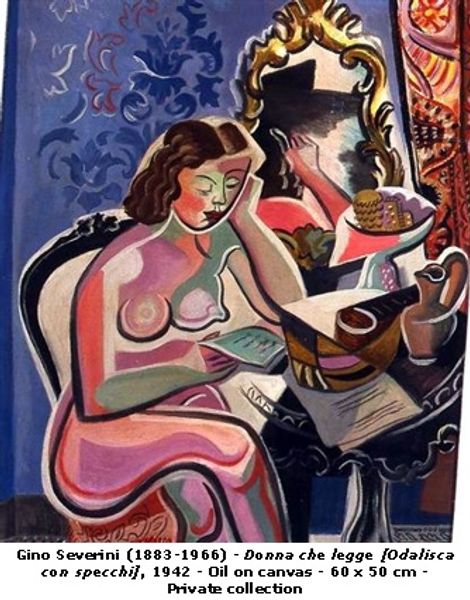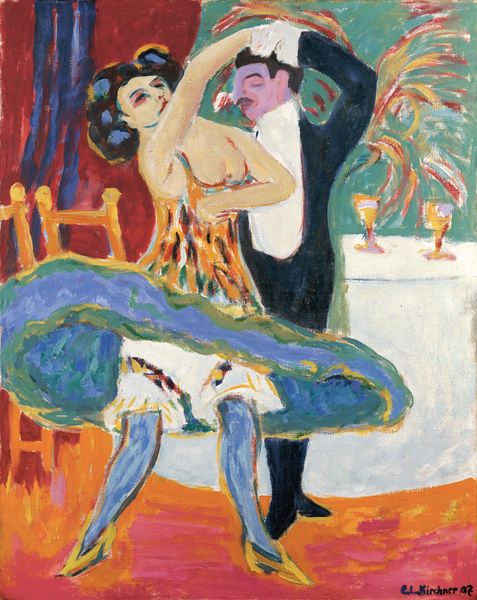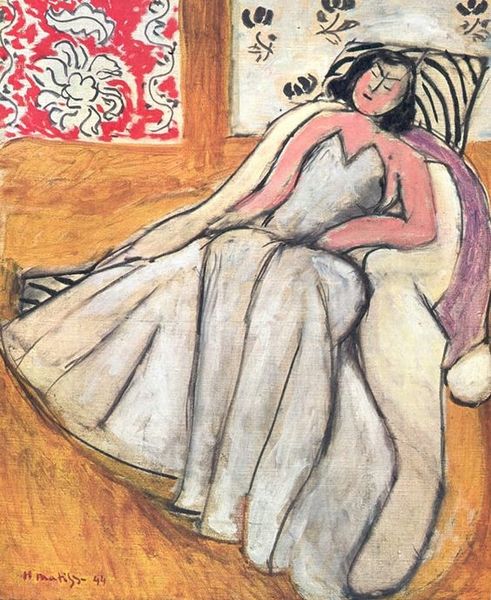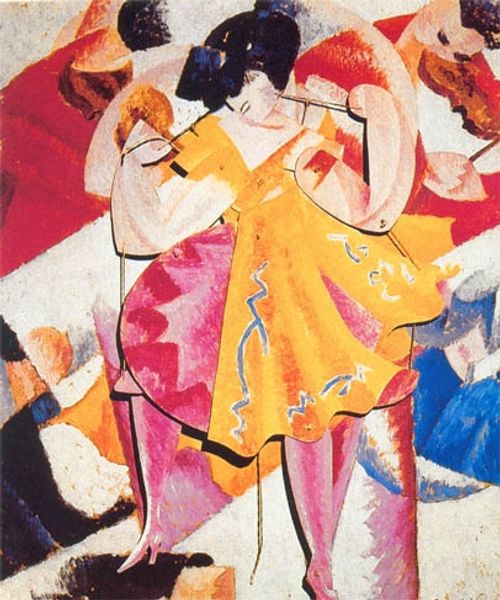
tempera, painting
#
portrait
#
cubism
#
tempera
#
painting
#
figuration
#
oil painting
#
portrait art
#
modernism
Copyright: Public domain
Curator: Let's turn our attention to Kazimir Malevich's "Argentine Polka," painted in 1911. Malevich, of course, is known for his later Suprematist works, but here we see him still exploring figuration through a Cubist lens. Editor: My initial impression is one of energetic awkwardness. There's a tension in the angular forms and contrasting colors. It feels like a dance on the verge of collapse. And look at how he’s used tempera! The texture is almost chalky, quite matte, unlike the glossy finish we might expect. Curator: Precisely. Malevich, while involved in avant-garde circles, was acutely aware of peasant art and craft traditions. The use of tempera, a common medium in icon painting, subtly grounds even his most experimental works in a certain cultural history. We see the politics of modernism being worked out here. Editor: Right, and if we focus on materials and processes, the application itself is quite revealing. Note the almost frantic brushwork in the background compared to the relative smoothness of the figures' attire. What about the consumption of imagery here? Curator: That contrast, I believe, speaks to the social dance being portrayed, doesn't it? It’s a high-society event rendered through the lens of a rapidly modernizing Russia. The material roughness hints at the social and political disruptions underneath the surface of bourgeois leisure. And let's not forget the institutional context: How was art, like this, viewed and discussed at the time? Editor: The materiality and execution signal both a break from tradition and a connection to craft-based practices, though, don’t they? We’re seeing, quite literally, the material effects of societal changes. Curator: It really is a work caught between worlds, isn't it? Malevich's experimentation with form reflects a society undergoing seismic shifts, as it transitioned into the turmoil that marked a shift in consciousness regarding class distinctions. Editor: Absolutely, and it makes you appreciate how material choices and modes of production were, and continue to be, intrinsically linked to broader socio-political upheavals. This little tango is actually much larger. Curator: Indeed. Considering "Argentine Polka," as a study in those fault lines gives a richer understanding, even now, of Malevich’s trajectory and of Russian modernism itself.
Comments
No comments
Be the first to comment and join the conversation on the ultimate creative platform.
